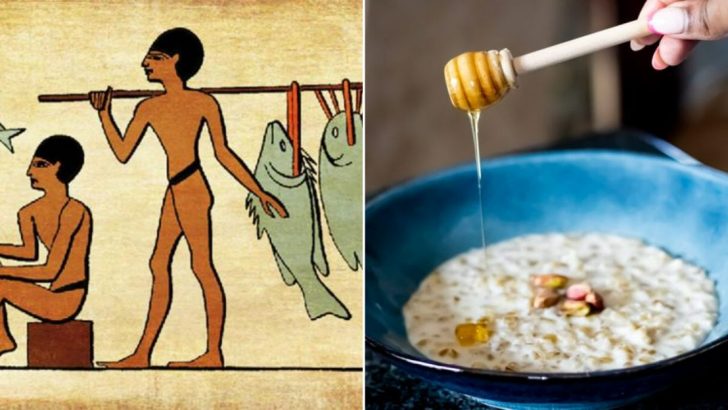Ancient Egypt wasn’t just about pyramids and pharaohs—it was also home to some seriously good food. From rich farmland along the Nile to smart cooking with simple tools, people there knew how to eat well.
Whether you were a farmer, builder, or royal scribe, your daily meals were packed with flavor, texture, and energy.
These 15 foods helped fuel a civilization that lasted thousands of years—and many are still on tables today.
1. Barley Bread
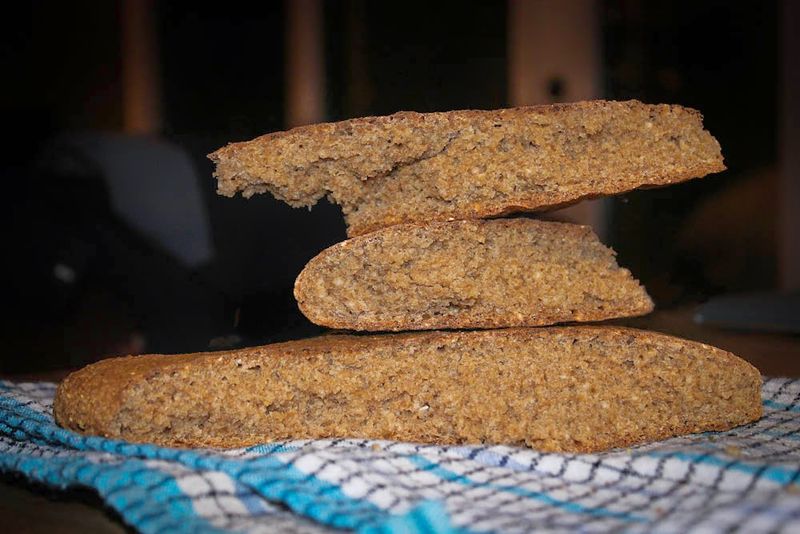
Nutty and dense, barley bread filled hungry bellies from sunrise to sunset. It was baked in clay ovens, often slightly burnt at the edges, with a crust that cracked under your fingers.
Mixed with sour dough starters and shaped by hand, the loaves had a chew that stuck with you. It was the daily staple that went with everything, and sometimes even doubled as a utensil.
2. Emmer Wheat Porridge

Warm, soft, and earthy, this porridge came from one of the earliest cultivated grains. It bubbled gently in pots, thickening into a slow-cooked base that made mornings better.
Often sweetened with dates or honey, it gave energy for long hours in the fields. Smooth but hearty, it stuck to ribs and kept people going through the heat.
3. Fava Beans

Mashed, stewed, or cooked whole, fava beans brought protein and comfort to the table. Their creamy texture mellowed out strong flavors and held up in stews.
Boiled with garlic or herbs, they made a rich, satisfying bite. These beans weren’t fancy, but they were filling—and they lasted through tough seasons.
4. Lentils
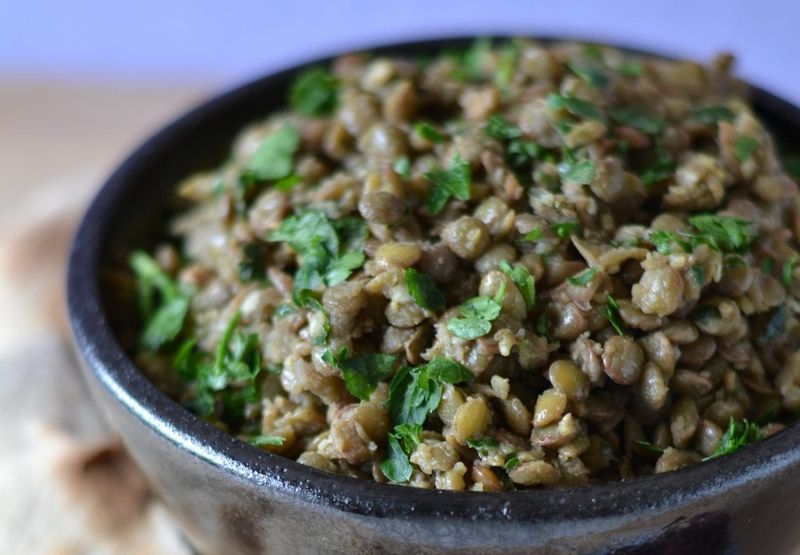
Tiny but mighty, lentils added color and depth to the Egyptian diet. They broke down into soft, rich meals that fed families without much fuss.
Spiced with salt and sometimes onion, they simmered into hearty dishes that smelled like home. A humble food with big impact, especially when meat was scarce.
5. Onions
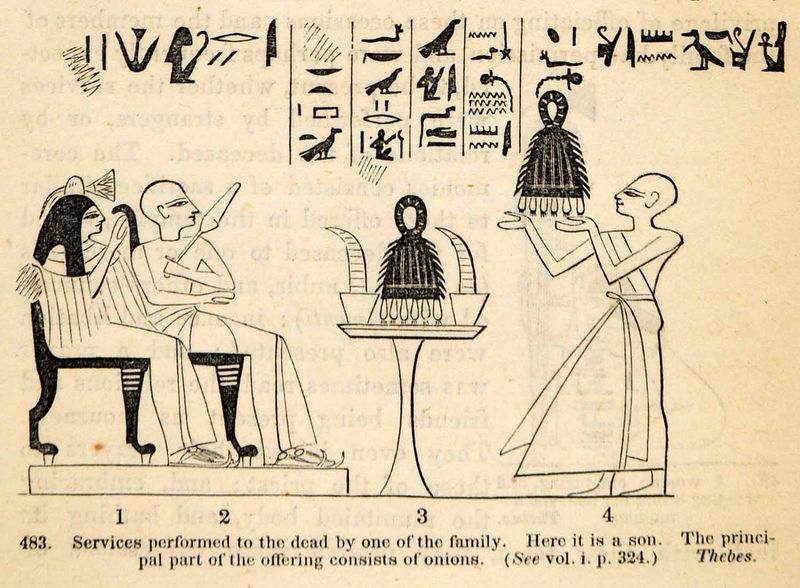
Sharp when raw, sweet when cooked—onions were both medicine and flavor in ancient kitchens. They were crushed into sauces, tossed into soups, or eaten whole on the go.
Workers even offered them at temple altars, believing they had power beyond taste. Their bite cut through bland dishes and made the basics sing.
6. Leeks
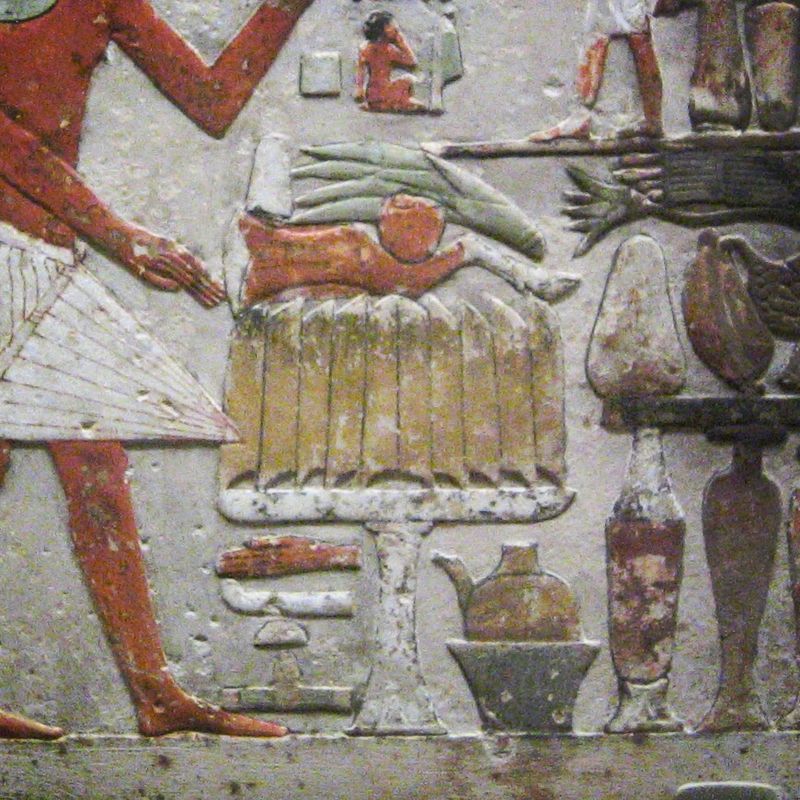
Gentler than onions, leeks had a mild, grassy sweetness that showed up in broths and stews. Their long white stalks were prized for softening strong flavors.
Sliced and cooked slowly, they turned silky and fragrant. A green you didn’t expect to crave—but it showed up everywhere, from temple feasts to farmer meals.
7. Dates

Sun-dried and sugar-sweet, dates were the original energy bar. Sticky and rich, they could be eaten alone or chopped into porridge for a caramel-like boost.
They kept well in hot weather and traveled far across the empire. A royal treat and a worker’s snack all in one sticky handful.
8. Figs
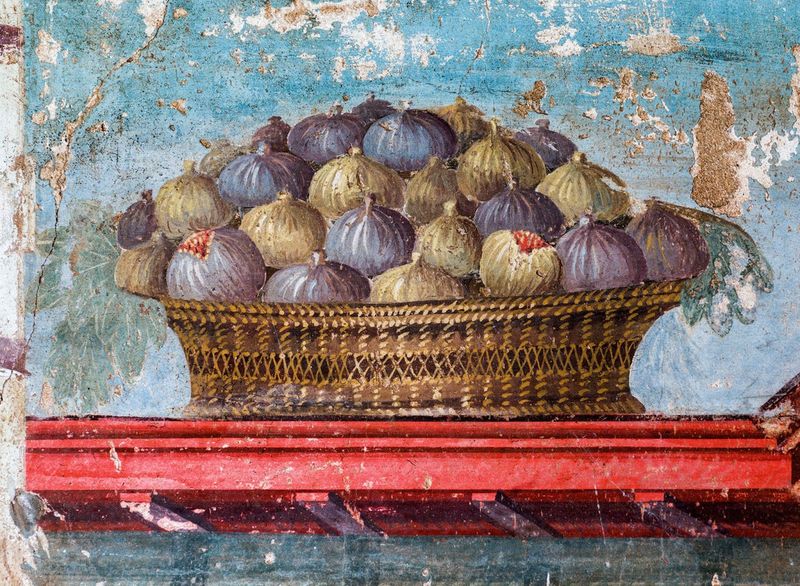
Soft, seedy, and deeply sweet, figs were pulled fresh from trees or sun-dried into chewy gems. They added texture to grain dishes and turned up in temple offerings.
Their honeyed taste felt luxurious, even when eaten out of hand. Ancient tomb art often shows them as gifts—because they were worth sharing.
9. Grapes
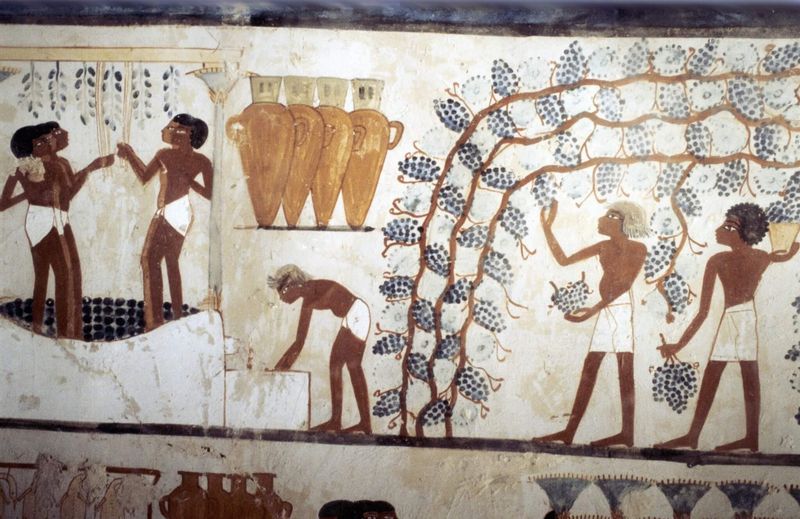
Crushed into juice, dried into raisins, or eaten fresh from the vine—grapes were a juicy joy. The sweetness burst as soon as teeth met skin.
Grown in neat rows along the Nile, they were turned into wine for gods and celebrations. But on normal days, a handful made for a perfect midday snack.
10. Cucumbers
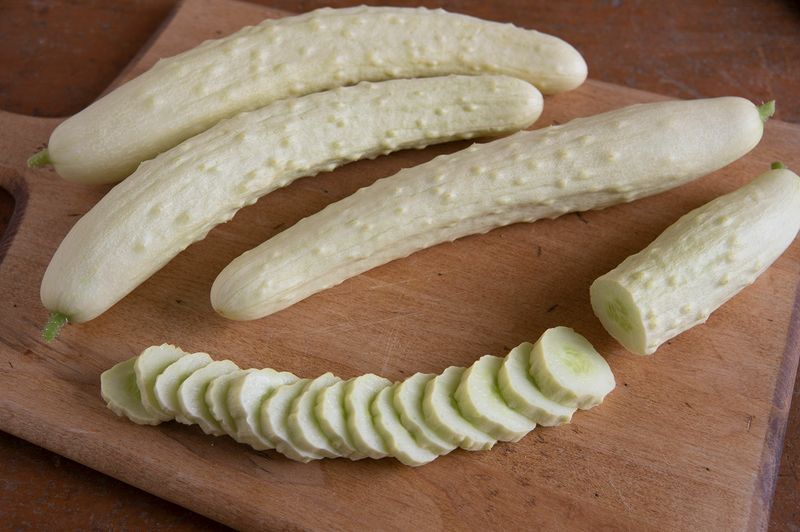
Cool and crisp, cucumbers cut through the desert heat like a splash of water. Sliced thin, they added freshness to heavy meals.
They didn’t need much seasoning—just a pinch of salt brought out their clean, green flavor. Farmers pulled them from the soil and ate them in the shade, juice dripping down their arms.
11. Radishes
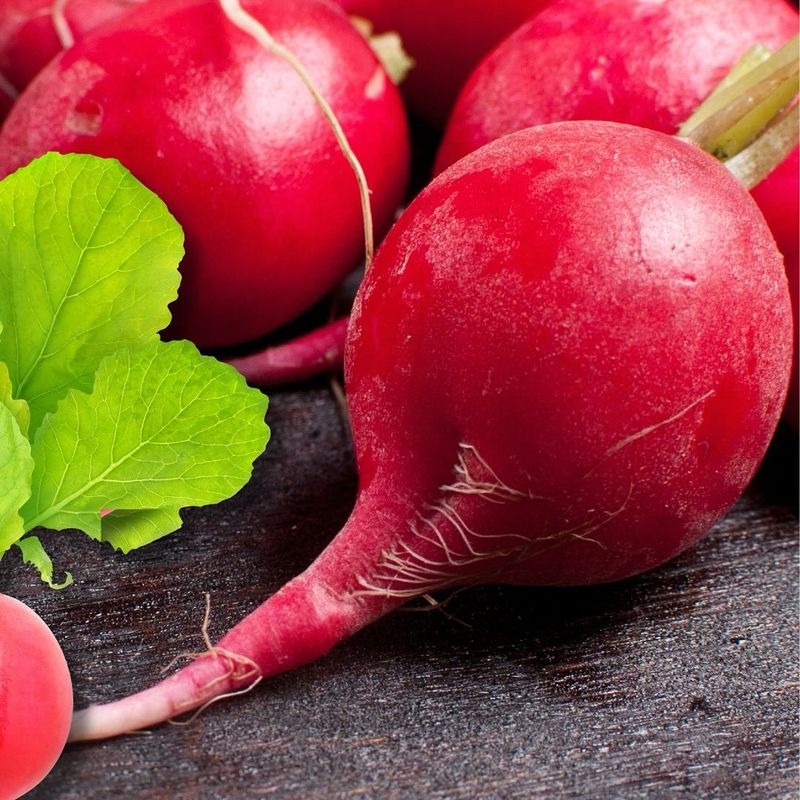
Peppery and crunchy, radishes brought fire to even the simplest meal. Their bite surprised the tongue and kept things interesting.
Eaten raw or tossed into stews, they added color and snap. Small but fierce, they grew fast and fed many.
12. Nile Tilapia
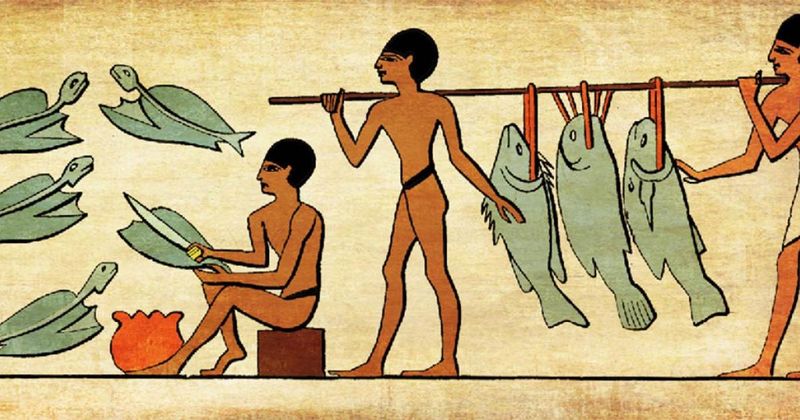
Caught fresh from the river, tilapia was grilled whole or dried for later. The flesh was flaky, mild, and easy to pair with flatbread or herbs.
This fish was painted on tomb walls and plated on simple reed mats. It was food for everyone—clean, lean, and reliable as the Nile itself.
13. Duck

Roasted until the skin crisped and the fat melted, duck was richer than most daily meals. Its dark meat soaked up spices and smelled incredible when cooked over fire.
It wasn’t an everyday thing, but showed up often enough in homes and temples. A bird that brought celebration to the table.
14. Goat Cheese
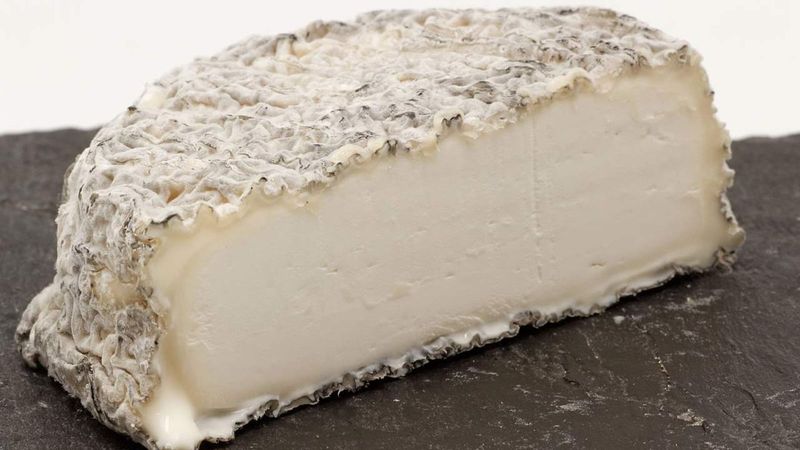
Soft and tangy, goat cheese came wrapped in leaves or packed in jars. It added richness to bread, softened salted vegetables, and stood on its own as a snack.
Made by hand and aged in clay pots, it tasted fresh and sharp. A bite of it with figs or barley bread was a real moment.
15. Honey

Golden and thick, honey was the crown jewel of Egyptian sweets. It dripped from combs into jars and flavored everything from cakes to sauces.
Offered to gods and treasured by royalty, it was more than just sugar—it was sacred. A little went a long way, and a spoonful felt like treasure.

